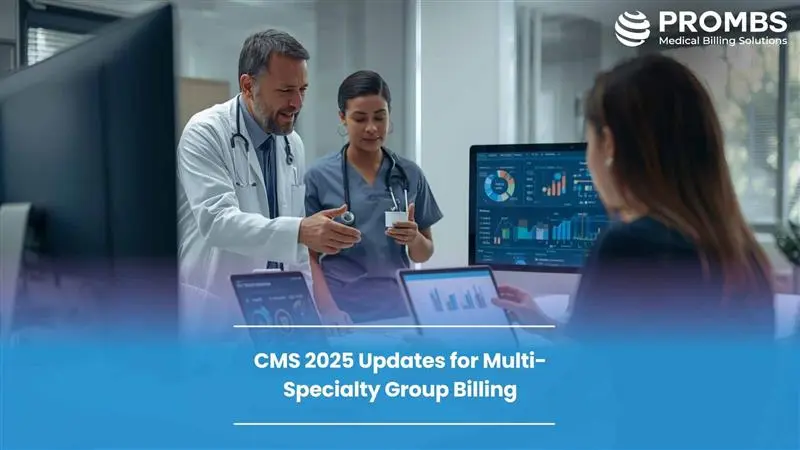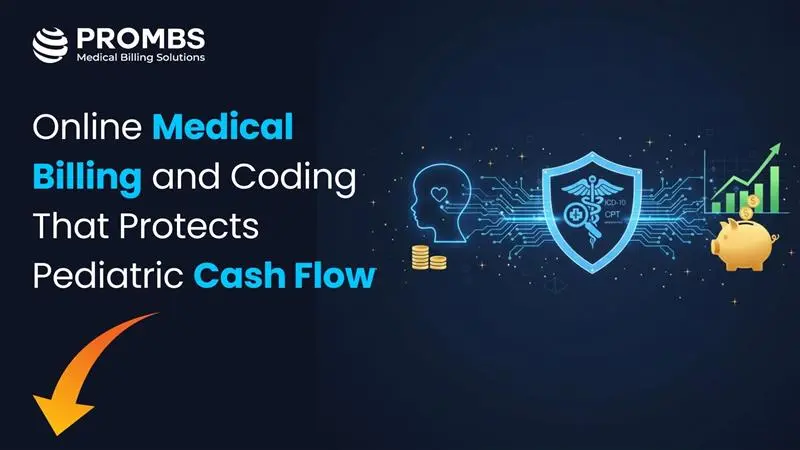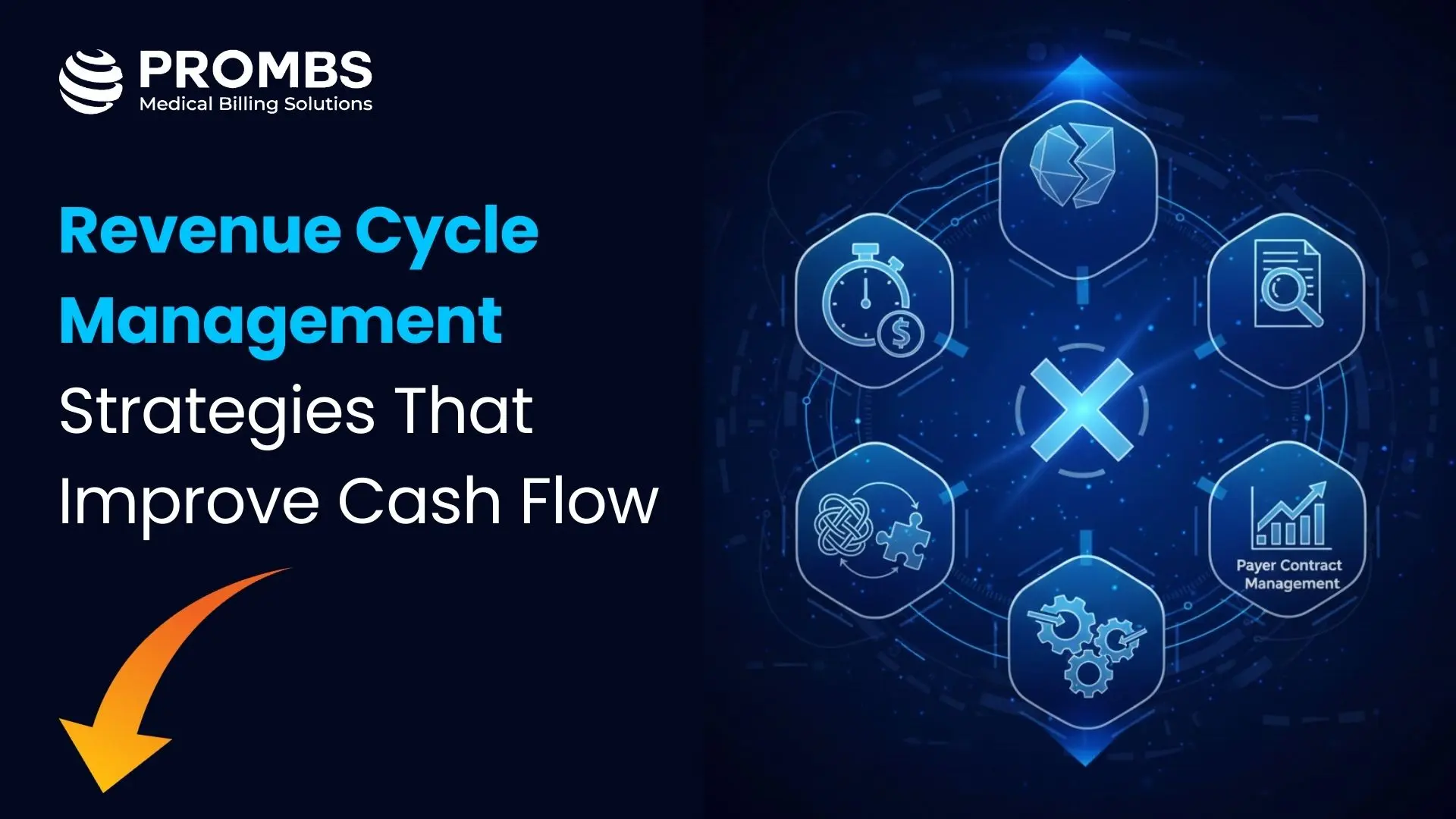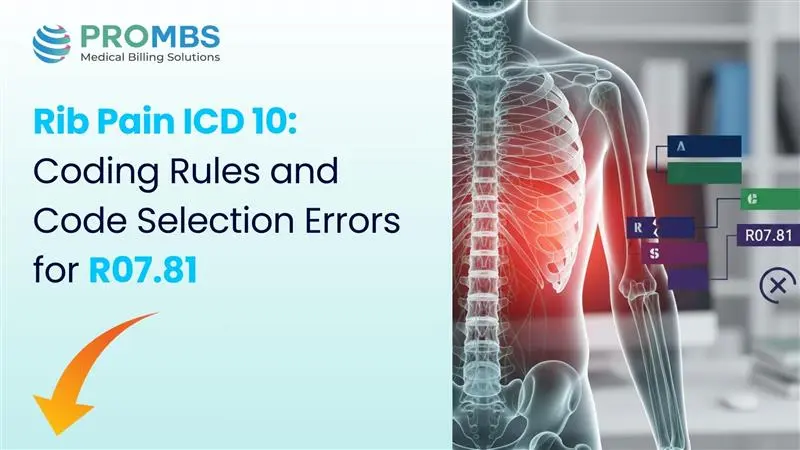Multi-specialty group billing is at the heart of CMS’s 2025 updates, and this year, the changes go far beyond the billing desk. CMS is reshaping how integrated practices document care, report quality, and get paid across specialties. For hospitals, health systems, and large physician groups, that means rethinking workflows, supervision, and reporting from the ground up.
These new rules mark a broader transformation in how healthcare operates. CMS wants every aspect of care, including clinical, financial, and operational functions, to work as one coordinated system. The goal is to close the gap between how care is delivered, documented, and reimbursed. In the sections below, we will break down what is changing in 2025, why these updates matter for multi-specialty practices, and what your group can do to stay compliant while protecting revenue.
Understanding Multi-Specialty Group Billing in 2025
At its core, multi-specialty group billing means multiple specialties operating under one tax ID. It’s a smart way to share resources and streamline care, but it also makes billing more complex, especially when several providers touch the same chart.
In 2025, CMS is doubling down on value-based care, integrated data reporting, and tighter compliance verification. Groups must ensure their EHR templates, time logs, and modifiers tell a consistent story across every specialty. The AMA’s CPT Editorial Panel emphasizes the same point: every billed service must clearly show medical necessity, time spent, and clinical complexity. Those small details now carry more weight than ever during audits or payer reviews.
Did You Know?
According to CMS, more than 45% of physician practices in the U.S. now operate within a multi-specialty group structure. These organizations handle higher patient volumes, more complex documentation, and cross-specialty billing interactions every day. As CMS expands its value-based care initiatives through 2025, multi-specialty groups are projected to experience a 12–15% increase in reporting and compliance requirements compared to single-specialty practices.
CMS Clarifications on Same-Day E/M and Critical Care Billing
Few topics cause more billing confusion than same-day services. The CMS 2025 Final Rule finally offers some clarity. When different specialties see the same patient on the same day, each can bill separately if their services are clearly distinct and medically necessary. But when providers from the same specialty within one group see that patient, CMS treats the encounter as one billable service.
Split/Shared and Time-Based Billing
Critical Care Billing Rules
New Billing Guidelines for Non-Physician Practitioners (NPPs)
Nurse practitioners (NPs), physician assistants (PAs), and other non-physician practitioners (NPPs) play a growing role in care delivery, and CMS is updating how their work is billed in 2025. NPPs can bill directly under their own NPI or incident-to a supervising physician, but CMS has introduced new supervision and identifier rules to improve billing transparency.
New Claim Identifier Rules
Beginning in late 2024, CMS introduced enhanced claim-level identifiers for all services provided by non-physician practitioners (NPPs) such as nurse practitioners, physician assistants, and clinical nurse specialists. These identifiers make it easier for CMS to verify who actually performed the service, even when it is billed under a supervising physician’s National Provider Identifier (NPI). According to the Medicare Learning Network (MLN) Matters, this change improves billing transparency and helps CMS identify patterns of overuse, duplicate claims, and other compliance risks. For billing teams, every NPP-related claim must now include the correct identifiers and be properly linked to the supervising physician when required. Missing or inaccurate identifiers can delay reimbursement and increase the likelihood of audit scrutiny under CMS’s program integrity standards.
Updated Supervision Standards
CMS also expanded the definition of virtual supervision, giving multi-specialty groups more flexibility in telehealth workflows. Supervising physicians can now oversee care remotely if real-time communication is documented. The HHS Office for Civil Rights continues to remind providers that virtual oversight must still meet HIPAA security standards.
These updates aim to make billing more transparent while maintaining accountability in collaborative care settings.
MIPS and MVP Reporting Changes for Multi-Specialty Practices
The transition from traditional MIPS to MIPS Value Pathways (MVPs) between 2025 and 2026 is one of the biggest shifts CMS has introduced in years.
Subgroup Reporting
Under MVPs, large practices can no longer report as a single entity. Instead, each specialty, such as cardiology, orthopedics, or primary care, must report its own quality metrics. This subgroup-level reporting approach creates a clearer link between specialty work and performance scores, but it also adds more moving parts. According to CMS’s Quality Payment Program (QPP) updates, this structure is designed to ensure fair benchmarking while rewarding specialty-specific improvement.
Value-Based Performance
The AMA recommends that multi-specialty groups assign an MVP lead for each department to manage data quality and ensure timely submissions. Groups that integrate EHR systems and automate their reporting will have an advantage in scoring and bonus payments under CMS’s value-based incentive models.
Medicare Physician Fee Schedule 2025: What’s Changing?
The 2025 Medicare Physician Fee Schedule (PFS) brings a 2.93% reduction to the conversion factor, affecting nearly every specialty. CMS Final Rule Summary Tables confirm that while some fields like behavioral health see slight increases, surgical and procedural specialties will feel tighter margins.
| Specialty Type | 2025 Impact | Key Takeaway |
|---|---|---|
| Primary Care | Small gain from care management codes | Expand chronic care programs |
| Surgical | Noticeable cut from conversion factor drop | Reassess CPT use and workflow |
| Behavioral Health | Increase under telehealth expansion | Invest in hybrid care models |
| Multi-Specialty Groups | Mixed results by CPT mix | Review payer contracts early |
Did You Know?
The 2025 Medicare Physician Fee Schedule (PFS) reduction of 2.93% may translate to over $1.6 billion in decreased Medicare reimbursement nationwide, according to CMS projections. Specialists such as surgeons and diagnostic physicians are expected to feel the sharpest impact, while primary care and behavioral health may see modest gains due to expanded care management and telehealth codes. This shift highlights why accurate coding and specialty-level financial planning are more important than ever for multi-specialty groups.
Strengthening Compliance and Documentation Workflows
Accurate documentation is no longer just a billing best practice; it is the backbone of compliance and reimbursement integrity. In 2025, CMS and OIG are increasing oversight on documentation accuracy, modifier use, and proof of medical necessity. Every entry in the medical record carries weight, from identifying who provided the service to showing how long it took and why it was necessary. Clear, complete notes not only protect your organization from audits but also strengthen the quality and traceability of patient care.
What are the Core Priorities for Compliance?
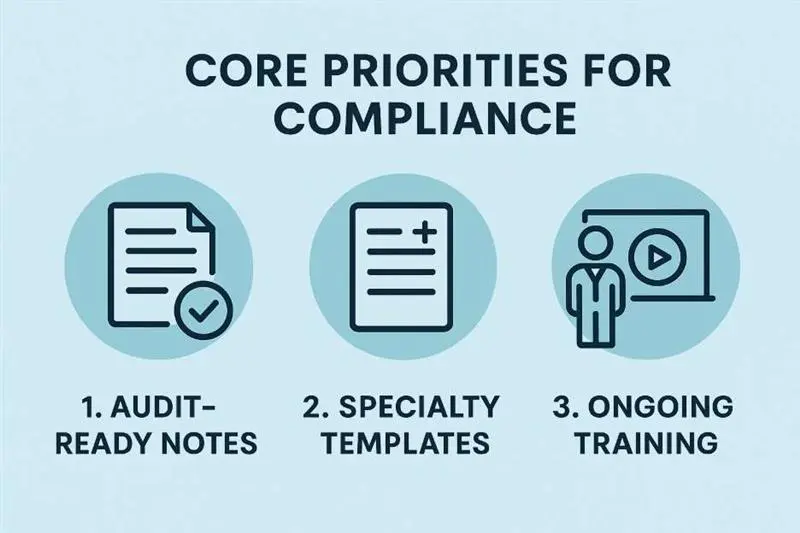
- Audit-Ready Notes: Documentation should go beyond basic entries and reflect the full scope of care provided. Include accurate start and end times, the provider’s reasoning, and how care was coordinated among specialties. Detailed notes make it easier to justify services during audits and demonstrate the clinical value of each encounter.
- Specialty Templates: Every specialty has different documentation needs, so EHR templates should be tailored accordingly. Generic or reused templates often lead to errors and inconsistencies. The OIG continues to flag “copy-paste” documentation as a major compliance risk because it can obscure who performed the service or why it was medically necessary. Well-designed specialty templates reduce those risks and improve billing accuracy.
- Ongoing Training: Continuous education is critical as CMS and payers update coding and documentation requirements each year. The Medicare Learning Network (MLN) recommends quarterly billing and compliance refresher sessions for providers and staff. Regular training helps teams stay current, prevent recurring errors, and maintain a culture of compliance across departments.
Even small, consistent improvements in documentation can make a measurable difference. They help your practice meet CMS expectations, avoid denials, and reduce the risk of costly post-payment reviews.
Preparing Multi-Specialty Groups for Value-Based Care
CMS’s Innovation Center models, including Primary Care First, ACO REACH, and the Enhancing Oncology Model, all point in one direction: more coordinated, value-driven care. Multi-specialty groups are in the perfect position to lead this change if they plan now.
Here’s where to start:
- Align billing and clinical teams to ensure everyone understands reporting goals.
- Automate claim validation with AI-supported RCM tools to catch coding errors early.
- Adopt interoperable EHRs so data flows seamlessly between specialties.
- Evaluate participation in CMS Innovation Center programs that fit your group’s strengths.
According to HHS OIG, organizations that invest in proactive internal audits and compliance reviews see fewer denials and stronger reimbursement outcomes.
Partner with Pro-MBS for Multi-Specialty Success
The 2025 CMS updates bring new challenges and opportunities for multi-specialty practices. Success now depends on precision, compliance, and a clear understanding of how each specialty contributes to the larger financial picture. Pro-MBS helps practices stay ahead by streamlining workflows, improving documentation, and strengthening revenue integrity across every department.
With deep expertise in CMS, OIG, and Medicare requirements, Pro-MBS transforms complex billing rules into actionable strategies. Our team partners with yours to reduce denials, improve accuracy, and ensure every claim reflects compliant, high-quality care.
FAQs
What are the CMS changes for 2025?
The CMS 2025 updates for multi-specialty group billing focus on value-based care, tighter compliance verification, updated NPP supervision rules, MIPS MVP subgroup reporting, and adjustments to the Medicare Physician Fee Schedule.
What are the changes in E&M coding 2025?
In 2025, CMS clarified time-based and split/shared E/M coding for multi-specialty practices. Providers must document total time, clinical complexity, and medical necessity to stay compliant and avoid denials.
What are the new Medicare codes for 2025?
The 2025 Medicare updates include expanded care management and behavioral health codes, refined time-based documentation rules, and integrated care codes supporting collaborative, value-based care in multi-specialty groups.
What does multi-specialty mean?
Multi-specialty refers to healthcare groups where different medical specialties operate under one tax ID, sharing workflows, EHR systems, and billing processes to align care and reimbursement.
What is a multi-specialty practice?
A multi-specialty practice is a healthcare organization where various specialties like cardiology, orthopedics, and behavioral health share one billing and compliance system, improving accuracy and efficiency.
What is a multispecialty clinic?
A multispecialty clinic combines multiple specialties in one location, using standardized billing workflows and CMS-compliant documentation to streamline care delivery and payment accuracy.
What is a multi-specialty group?
A multi-specialty group is a coordinated healthcare entity that delivers services across multiple specialties under unified CMS billing, MIPS MVP reporting, and value-based care frameworks for 2025.
